Jointly put together by the Singapore Heart Foundation and Singapore Civil Defence Force, a series of Save A Life roadshows are currently being organised around Singapore – to raise awareness about sudden cardiac arrest, and the need for bystanders to build a strong chain of survival to increase a victim’s chances of survival.
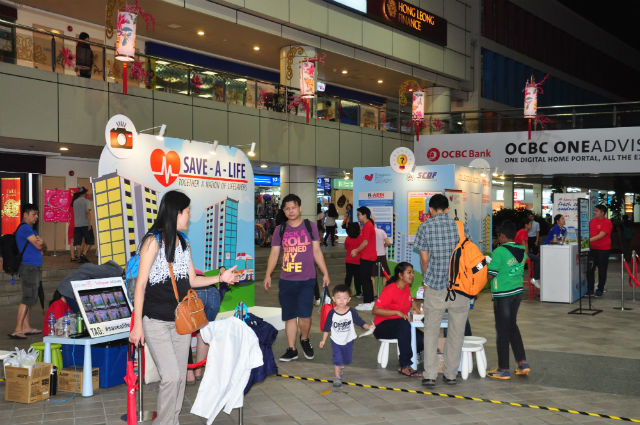
Roadshows to raise awareness that sudden cardiac arrest can happen to anyone
As well, through the Save A Life roadshows, the Singapore Heart Foundation hopes that attendees can take away the message that absolutely anyone can have the power to save the life of a fellow human being.
Explained Joanne Su, Marketing Executive with the Singapore heart foundation, “The Save A Life roadshows hope to raise awareness amongst Singaporeans about sudden cardiac arrest and how the community can step in to help save someone’s life.”
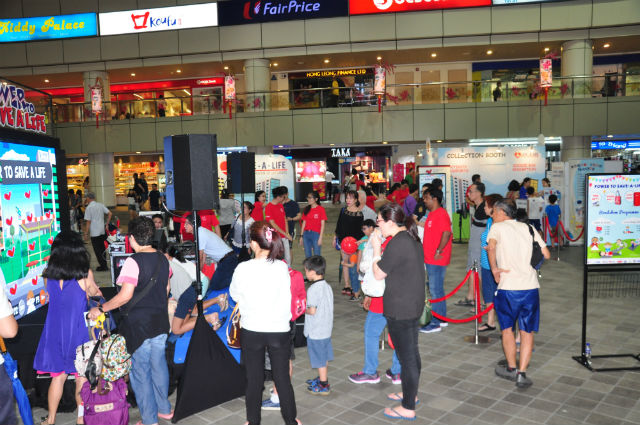
She added, “A lot of people in Singapore do not know about sudden cardiac arrest and how it can affect people of any age and any health condition. You can be a perfectly healthy and fit person and suddenly your heart can stop beating. This is the most vulnerable situation to be in, because when your heart stops, you collapse and there is no way to help yourself. You are really dependent on the goodwill of the community to step in to help you with a series of very quick actions. This series of quick actions is called the chain of survival. We hope to raise awareness firstly about sudden cardiac arrest and secondly about the chain of survival.”
The chain of survival for sudden cardiac arrest
The chain of survival consists of five different stages and in order for a person to survive a sudden cardiac arrest, the first three stages are the most important stages for the general public to step in, as quickly as possible.
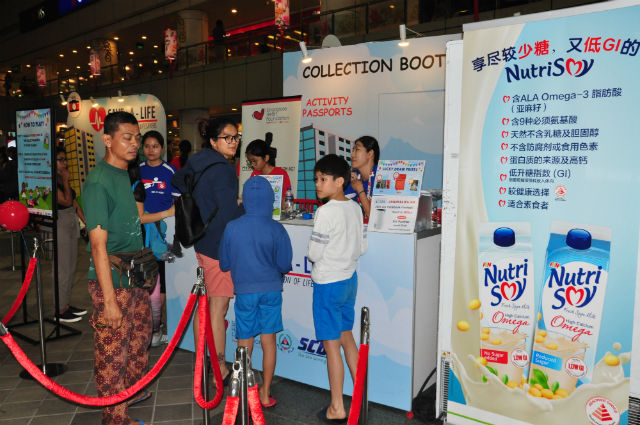
Joanne explained that the first step is calling 995. She said, “We keep reminding people to call 995 for the fastest emergency ambulance service to be dispatched.”
The second step is to start CPR on the person. Said Joanne, “Don’t worry if you have never been trained in CPR – you can depend o the help of the operator if you stay on the line with them. They will give you instructions on the phone and then you can do the CPR as best as you can.”
The third stage is to apply an AED (automated external defibrillator) that helps the heart to refresh its rhythm with an electric shock. Said Joanne, “This will help if the sudden cardiac arrest is shockable. Then after these three steps, the person’s life is now out of your hands. Step four is the arrival of the ambulance and step five is to rehabilitate the person.”
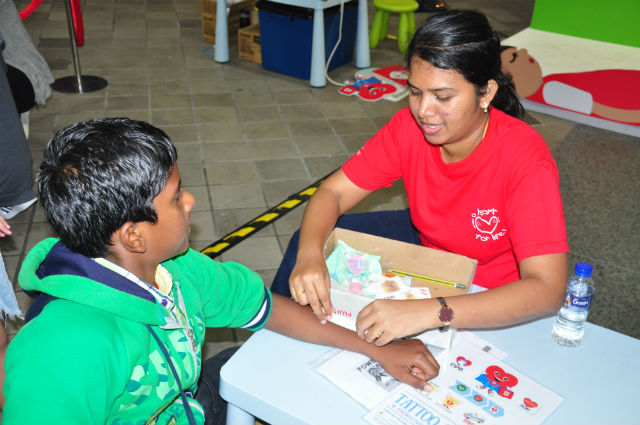
She added, “So if you are wondering where the general public is needed to step in – it is in the first three steps – 995, CPR and AED.”
Misconceptions of sudden cardiac arrest
Joanne also pointed out that many Singaporeans have the misconception that sudden cardiac arrest will only happen to the very old or very sick. But she clarified that this is not true at all though. In fact, she also hopes that the roadshows will correct this impression that people have.
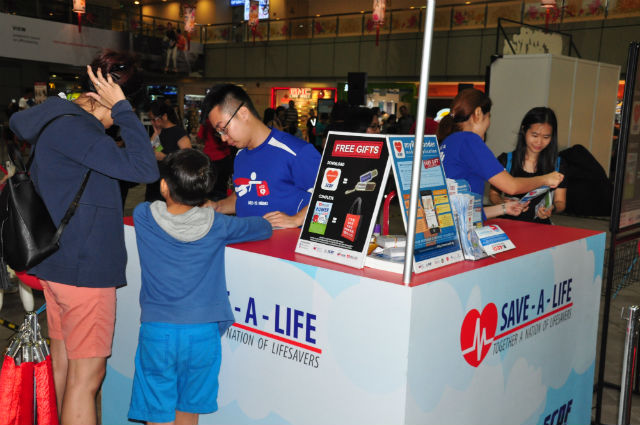
She said, “But actually the truth is that it can affect people of all ages, ranging from children to teenagers and adults, and the elderly. Everyone is at equal risk.”
She also pointed out that while doing endurance sports such as marathon running and Ironman triathlons does not increase the risk of having sudden cardiac arrest, but it is important for athletes to be aware of this condition so that they know what to do, should a fellow athlete collapse in the middle of the race.
Said Joanne, “There are a lot of cases of people collapsing in the middle of a sports event – this could be because the heart has suffered an abnormal rhythm and cannot work together with the rest of the body to pump blood efficiently. This is how some forms of sudden cardiac arrest can indeed occur.”
Invited down to one of the roadshows
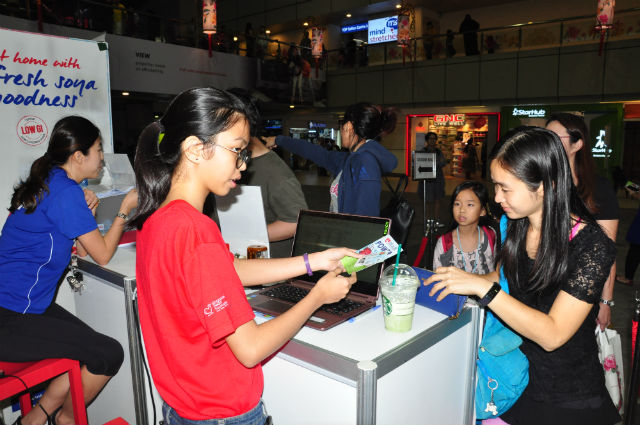
The Singapore Heart Foundation had invited me down to one of their roadshows. This session had been held at the Toa Payoh HDB Hub last weekend.
At the roadshow, there had been five activity stations where visitors could learn more about different aspects of the chain of survival for a sudden cardiac arrest. And to be part of the activities, the process was quite simple – I only needed to register for a free admission passport using my NRIC.
Photo Booth
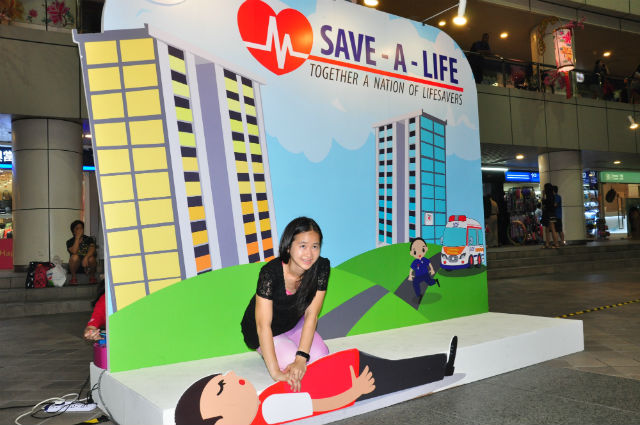
The first activity had been a photo booth where you can pose for a picture with your friends and family to depict the first three vital stages of what to do when someone suffers a sudden cardiac arrest.
So this means that one person would be holding up a cardboard cutout with ‘995’ on it, the second person would be kneeling down to perform CPR on a cardboard cut-out of a man, and the third person would then hold up a cardboard sign with ‘AED’ on it.
As there had been only one of me to take the photo, I chose to knelt down for the CPR pose. According to Joanne, if there are only one or two persons, she recommends that the 995 and the CPR steps are the most important ones.
The Power To Save A Life Game
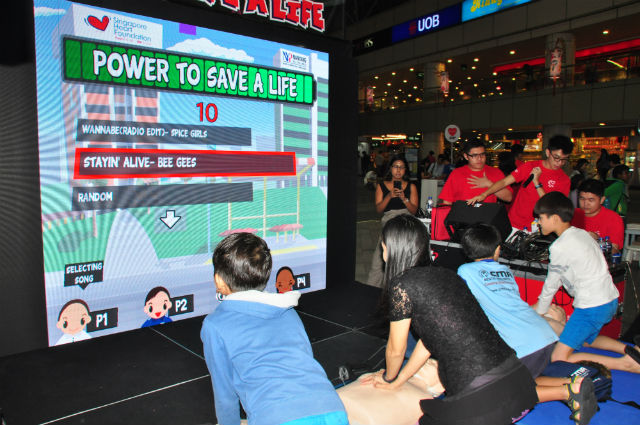
The second game was the most interesting and educational one, though. Called the Power To Save A Life game, it is the first-ever music video game in South East Asia that shows you how easy it is to save a life.
The game had been conceptualised by Singapore Heart Foundation and developed by students from Nanyang Polytechnic.
Explained Joanne, “This game mimics what you need to do in a CPR situation. But we are only getting people to do the chest compressions though, to the rhythm of music. It is a similar concept to Guitar Hero but instead of strumming a guitar, you press on the chest of the mannequin for one minute to play the game.”
Songs that are available include Staying Alive by the Bee Gees and Can’t Stop The Feeling by Justin Timberlake.
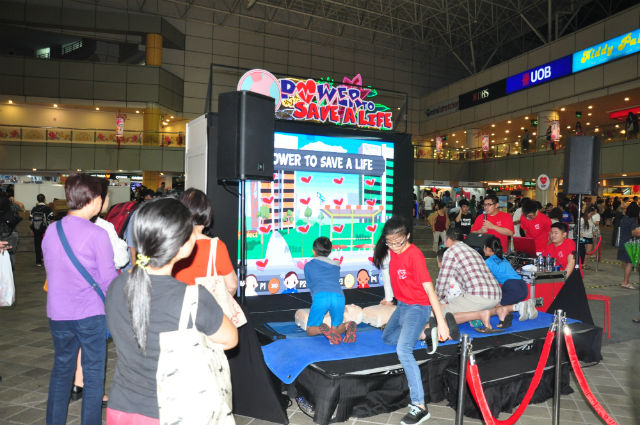
She added, “The game helps to lower the mental barrier that people have to be trained to do CPR or that only strong people can do CPR so we should only leave it to the pros. Nope, anyone can do CPR. It is the matter of keeping to the rhythm and nothing to do with personal strength or training.”
I tried out this game. This was the first time that I was trying to do ‘CPR’ and to be honest, I had thought that it was not that easy to keep the chest compressions in time to the beat of the music; there had actually been several occasions when I found I had missed the beat. But then again, I have never been that good at playing Guitar Hero though…
Said Joanne, “For every minute, you do 100-120 chest compressions. So the beat of the music is very important; we did not simply choose any song. We chose songs that have 100 beats per minute to their rhythm because that is the official rate that you have to follow when you are doing CPR. That is one aspect of how we choose to raise awareness and educate people about CPR.”
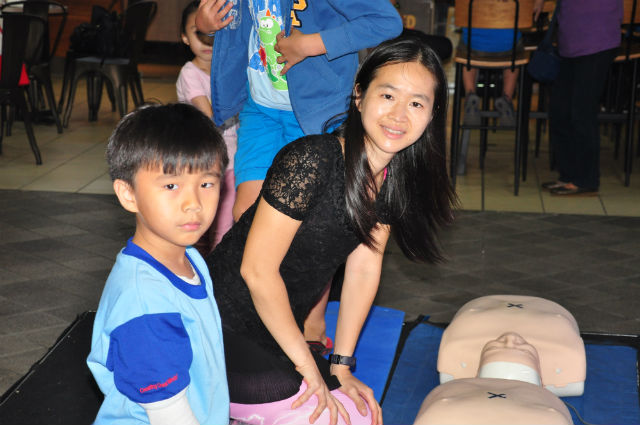
The 100-120 chest compressions are also ideally to be done at a depth of about four to six centimetres.
After going through the game, I agree that it was definitely educational and taught me that performing CPR on a person may indeed be a lot easier and less complicated, than I had initially thought it to be.
Through this game, the Singapore Heart Foundation hopes to also increase the bystander response rate for sudden cardiac arrest. In Singapore, the out-of-hospital cardiac arrest survival rate currently stands at a low 21.3 per cent.
Downloading the MyResponder app
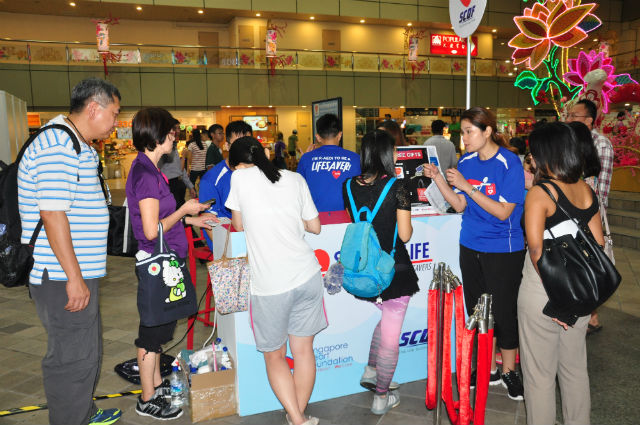
The third activity station had been to download and test out the MyResponder mobile application – a lifesaving app that provides the emergency operator with an automatic GPS location of an emergency when you dial 995 within the app. This is a free download for both iPhone and Android.
The app also has a crowdsourcing function that pushes an alert to registered users in the vicinity, that is, within a 400-metre radius, so that they can assist with CPR or apply an AED while waiting for the ambulance to arrive.

If app users need to find an AED, the app has a map that guides them to find the nearest one in their location, as well.
The volunteers onsite can also teach you what to do, if you witness a sudden cardiac arrest happening or if you receive an alert through the MyResponder app.
After successfully downloading the app, I then had to answer the question of what was the nearest AED in location of the Toa Payoh HDB Hub. The answer could be found in the app and if we got it correct, this would signal that we know how to use the MyResponder app.
Leafing through the app on my iPhone 7+ after downloading it and taking a look at the various functions that it had, I had felt that it was not too difficult to use, and I found the answer to the question after a short time.

Explained Joanne, “Having attendees download the MyResponder app helps to raise awareness and training on how to use the app, to find the nearest AED and how to use the app to call 995, too.”
And as a reward for downloading the app too, attendees at the roadshow also receive a small mystery gift.
You can download the MyResponder app for iPhone here or for Android here.
Quiz Questions
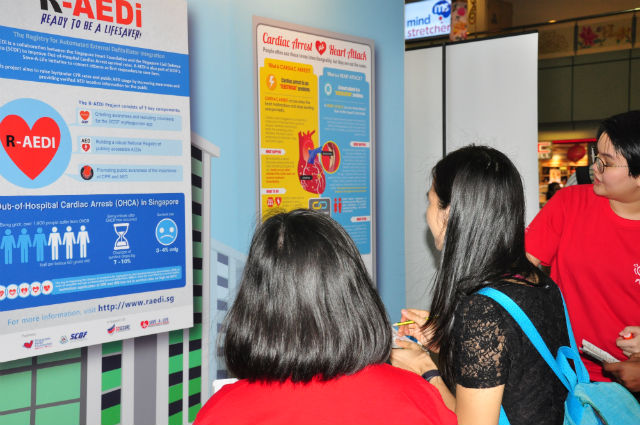
The fifth and final station was a quiz. We had to read the posters that were printed on the display panels in order to answer a few questions related to sudden cardiac arrest.
I thought that the questions are all quite straightforward and easy to locate the answers. But if you are having difficulties finding the answer to any of the questions though, there are volunteers on hand to point out the section or the poster where the right answer is supposed to be located.
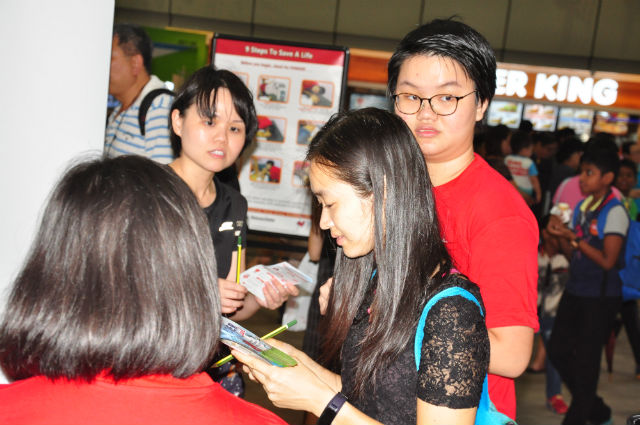
In addition to finding the answers to the questions, I felt that the posters were all very educational and teach people more about what sudden cardiac arrest is, how to spot the signs and symptoms of one, and how to give a sudden cardiac arrest victim the best chances of surviving the condition.
Redeeming a free goodie bag
I received one stamp upon completing each of the activities and once I collected all five steps, I received a free goodie bag.
The goodie bag that was being given out contains heart-healthy and beneficial items such as soya bean milk, almonds, avocado oil and a SalonPas pain relieving patch.
At the same time, I was also entitled to two chances in a grand lucky draw – as a reward for my participation in the Toa Payoh roadshow. The lucky draw prizes include a EuropAce 85L Red Retro Fridge, Clip N Climb Savers Pass for 10 climbs, and an Acado assorted oils hamper.
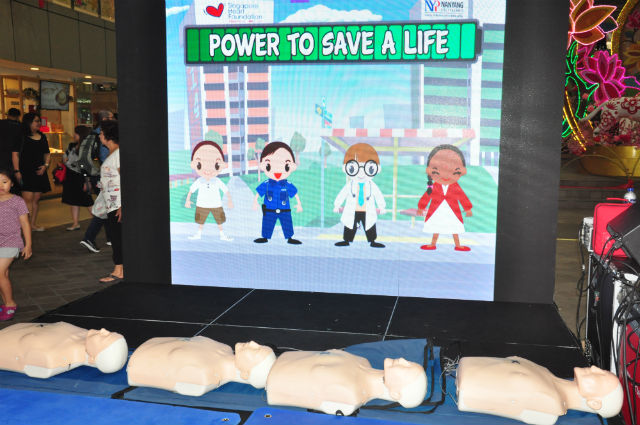
Next Save A Life Roadshow
If you are keen to attend the roadshow yourself and learn more about sudden cardiac arrest, the next Save A Life Roadshow will be taking place from 15 – 18 March at the Canopy @ J-Link, 134 Jurong Gateway Road. It will be open from 10am – 9pm during each of the three days.
Can’t make down it to Jurong on those dates? Click here to find out more about the other upcoming Save A Life roadshows.

Leave a Comment